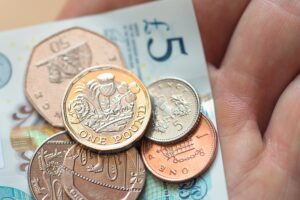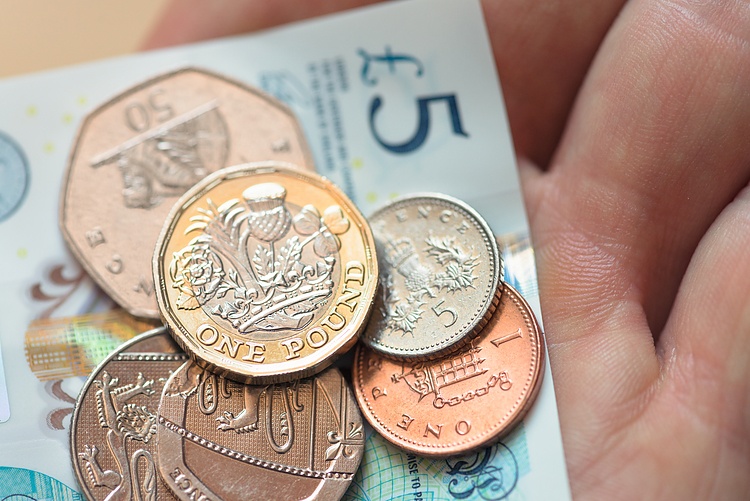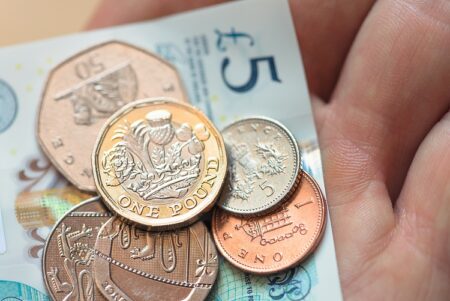- Pound Sterling remains on the frontfoot amid a risk-on mood ahead of BoE policy.
- The BoE is expected to keep interest rates unchanged but is likely to keep the odds of more rate hikes alive.
- UK business optimism dipped to a ten-month low as firms cut heavily on personnel and inventory in October.
The Pound Sterling (GBP) clings to gains on Thursday ahead of the interest rate decision by the Bank of England (BoE), which is expected to keep rates unchanged at 5.25%. The GBP/USD pair recovered sharply on Wednesday as market sentiment improved after the Federal Reserve (Fed) kept interest rates steady in the range of 5.25%-5.50%.
The UK economy is struggling for a firm footing due to weak retail demand, poor business data, a vulnerable housing sector, and a deteriorating labor market. These factors could lean BoE policymakers towards keeping interest rates unchanged as more rate hikes could further dampen the economic outlook and push the economy into a recession.
A steady monetary policy decision from the BoE could avoid damaging further UK economic prospects, but it would also increase upside risks to consumer inflation. Inflation in the country is still above 6% despite a historically tight rate-hiking campaign. Meanwhile, deepening Middle East tensions pose more threats to the progress in taming inflation toward 2% as the possibility of tightened Oil supply could propel energy prices again.
Daily Digest Market Movers: Pound Sterling capitalizes on soft US Dollar
- Pound Sterling holds onto gains inspired by an improved market mood on expectations that the Federal Reserve is done hiking interest rates.
- The GBP/USD pair is preparing for a volatile action as the Bank of England (BoE) will announce its monetary policy decision at 12:00 GMT.
- The BoE is widely expected to keep interest rates unchanged at 5.25% as potential slowdown fears in the UK economy mount.
- This would be the second straight time that the BoE kept rates unchanged despite upside risks to consumer inflation.
- Barclays predicts a 1-6-2 split vote in the BoE’s Monetary Policy Committee, with policymaker Swati Dhingra voting for a rate cut while Jonathan Haskel and Katherine Mann voting for a 25 basis points (bps) rate hike.
- New Deputy Governor Sarah Breeden, who has replaced Jon Cunliffe, is expected to vote for keeping interest rates at the current levels.
- Plenty of factors such as employment retrenchment, contracting business activity, falling consumer spending, declining consumer confidence, and a weak housing market support an unchanged interest rate decision from the BoE.
- BoE Governor Andrew Bailey is expected to keep expectations of more interest rate hikes alive as inflation is more than three times the desired rate of 2%.
- The headline and core inflation in the UK economy are at 6.7% and 6.1%, respectively, partly fueled by strong wage growth.
- The upside risks to consumer inflation have escalated due to deepening Middle East tensions, which could propel energy prices.
- The BoE is also expected to release new inflation forecasts. Investors will check if the bank’s inflation outlook aligns with Prime Minister Rishi Sunak’s promise of halving inflation to 5.4% by year-end.
- Investors will keep focus on inflation forecasts for 2024 and growth prospects as the British economy is struggling with higher interest rates.
- There is increasing speculation that the central bank could raise the inflation target to 3%.
- Andrew Bailey, in his remarks, remained confident that price pressures will remarkably decline in October and denied any plans of raising the inflation target.
- On the economic data front, S&P Global reported on Wednesday that Manufacturing PMI dropped to 44.8 in October against expectations and the preliminary reading of 45.2.
- S&P Global reported that “Risks to the outlook remain skewed to the downside. Business optimism dipped to a ten-month low and manufacturers’ increased belt-tightening drove cuts to employment, purchasing, and inventories.”
- Meanwhile, the US Dollar falls sharply on increasing odds that the Fed is done hiking interest rates. In addition to a stable Fed policy, weak ADP private payrolls and downbeat ISM Manufacturing PMI data have also weighed heavily on the US Dollar.
- The US ADP reported that employers hired 113K job seekers, lower than expectations of 150K but significantly higher than the former reading of 89K. The ISM reported the Manufacturing PMI at 46.7, lower than expectations and the former reading of 49.0.
- Going forward, the US Dollar will dance to the tunes of the Nonfarm Payrolls (NFP) data, which will be published on Friday.
Technical Analysis: Pound Sterling aims to climb above 1.2200 resistance
Pound Sterling faces some selling pressure after a sharp recovery to near 1.2200. The GBP/USD pair attempts to break above the 20-day Exponential Moving Average (EMA), which trades around 1.2185. The Cable, which strengthened sharply after Wednesday’s Fed decision, falls slightly in the European morning but remains above 1.2100 ahead of the BoE monetary policy decision. The pair’s broader outlook remains vulnerable amid downward-sloping 50-day and 200-day Exponential Moving Averages (EMAs).
Interest rates FAQs
Interest rates are charged by financial institutions on loans to borrowers and are paid as interest to savers and depositors. They are influenced by base lending rates, which are set by central banks in response to changes in the economy. Central banks normally have a mandate to ensure price stability, which in most cases means targeting a core inflation rate of around 2%.
If inflation falls below target the central bank may cut base lending rates, with a view to stimulating lending and boosting the economy. If inflation rises substantially above 2% it normally results in the central bank raising base lending rates in an attempt to lower inflation.
Higher interest rates generally help strengthen a country’s currency as they make it a more attractive place for global investors to park their money.
Higher interest rates overall weigh on the price of Gold because they increase the opportunity cost of holding Gold instead of investing in an interest-bearing asset or placing cash in the bank.
If interest rates are high that usually pushes up the price of the US Dollar (USD), and since Gold is priced in Dollars, this has the effect of lowering the price of Gold.
The Fed funds rate is the overnight rate at which US banks lend to each other. It is the oft-quoted headline rate set by the Federal Reserve at its FOMC meetings. It is set as a range, for example 4.75%-5.00%, though the upper limit (in that case 5.00%) is the quoted figure.
Market expectations for future Fed funds rate are tracked by the CME FedWatch tool, which shapes how many financial markets behave in anticipation of future Federal Reserve monetary policy decisions.
Read the full article here



